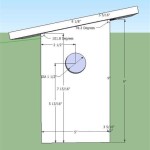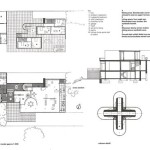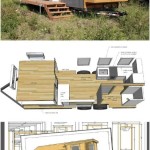Building Your Own House Plans: A Comprehensive Guide
Building a house from scratch can be a daunting task, but it's also an incredibly rewarding one. If you're considering taking on this challenge, one of the first steps is to create a house plan. This detailed document will outline the design, layout, and structure of your future home. While hiring an architect is an option, many homeowners choose to design their own house plans to save money and have more control over the process.
Benefits of Building Your Own House Plans
- Cost savings: Architects can charge thousands of dollars for a house plan, so doing it yourself can significantly reduce the cost of building your home.
- Customization: Designing your own plan allows you to tailor your home to your specific needs and preferences.
- Control: You have complete control over every aspect of the design process, ensuring that your home meets your exact vision.
Essential Aspects of Building House Plans
When creating your own house plans, there are several key aspects to consider:
- Site planning: This involves choosing the location of your home on the property, considering factors such as topography, drainage, and sun exposure.
- Floor plan: The floor plan outlines the layout of each level of your home, including the placement of rooms, doors, and windows.
- Structural design: This aspect focuses on the engineering and construction details of your home's foundation, framing, and other structural elements.
- Electrical and plumbing systems: These plans show the location and layout of electrical wiring, plumbing pipes, and fixtures.
- HVAC systems: These plans outline the design and installation of heating, ventilation, and air conditioning systems.
Tools for Creating House Plans
Several software tools are available to help you create your own house plans. Some popular options include:
- SketchUp: A 3D modeling software that allows you to design and visualize your home in detail.
- Home Designer: A user-friendly software specifically designed for home planning and design.
- Chief Architect: A professional-grade software offering advanced features for complex designs.
Building Codes and Permits
Before beginning construction, it's crucial to ensure your house plans comply with local building codes. These codes regulate the construction and design of homes to ensure safety and structural integrity. You will also need to obtain building permits from the local authorities before starting construction.
Conclusion
Building your own house plans can be a complex but rewarding endeavor. By carefully considering the essential aspects of house design and utilizing the right tools, you can create a detailed plan that meets your specific needs and preferences. While it requires time and effort, designing your own house plans can save money, offer greater customization, and give you a sense of accomplishment as you watch your dream home come to life.

House Plans And Design

Make Your Own Floor Plans

House Plans And Design

Building Your Own House Today Would Be A Great Deal Financially Due To The Cost Of Materials And Labor This T Roof Design Plans Layout

Build Your Own House How To Get Started On Self Project

Small House Plans To Build Your Own Home

Build Or Remodel Your Own House Building A Small Plans

10 Achievable Steps To Building Your Own Home And Living The Dream

House Plan Central Hpc 2026 16 Is A Great Houseplan Featuring 2 Bedrooms And Bath 0 Half

Build Your Dream House Inspired By This Modern Design Cool Concepts








